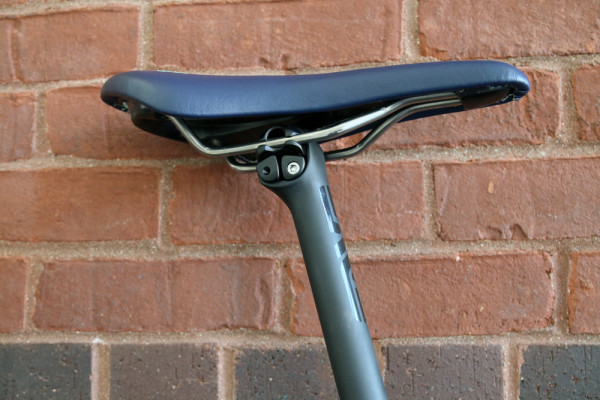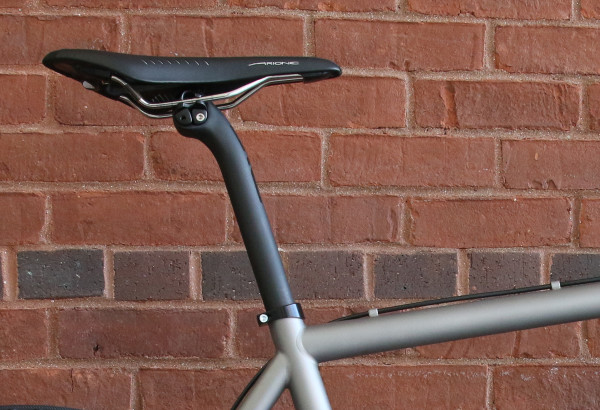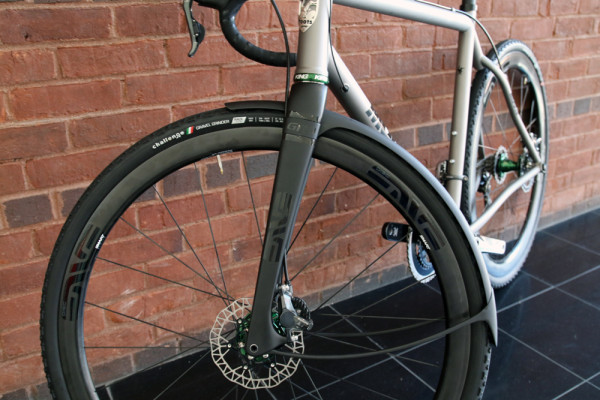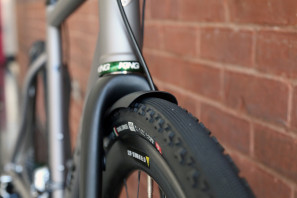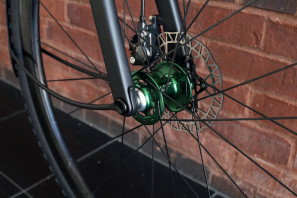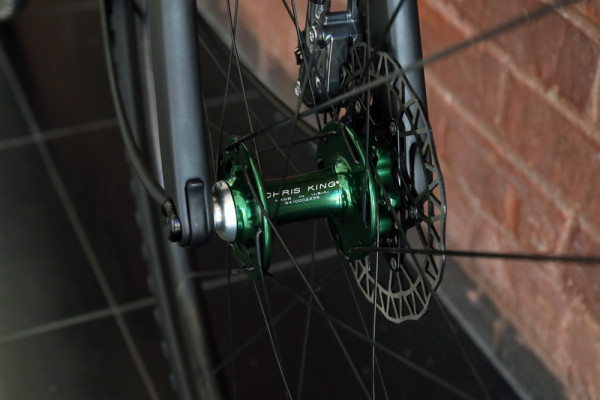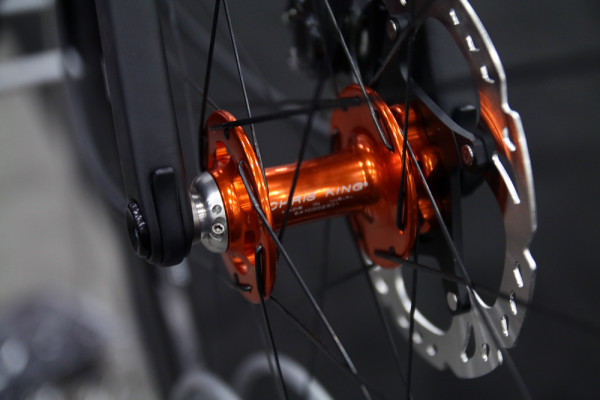It seems that ENVE had more than one surprise when it comes to new products hidden in plain sight. Following the discovery of their new GRD thru axle disc fork with the clever removable fender, we spotted an all new seatpost design on a beautiful bike from Machine Cycles. It turns out that the post was used on a number of show bikes hinting towards a launch in the near future.
Not much is known about the post other than the fact that it is no longer a single bolt design. Now with opposing bolts and what looks like two separate wedge systems, our guess would be that the twin bolt design may allow for separate fore/aft and angle adjustments. More details next…
While Machine Cycles had a zero offset seatpost on their show bike, Moots also had one of the new posts on their prototype dirt road machine (more on that soon). Instead of the zero offset version, Moots had a setback post which means there should be at least two offset options for the new design. More when we have it on the new post.
When it comes to the new ENVE GRD fork, Moots provided a few missing details as they apply at least to their pre-production sample. Based on a 382mm axle to crown length, the fork slots in between a traditional road fork (367mm) and a cyclocross fork (395mm) but still has enough clearance to fit a 38mm tire. According to Moots that allows the new dirt road prototype to be built with a lower front end than most gravel bikes enabling the “perfect dirt road build.”
You can’t take advantage of a 12x100mm thru axle without thru axle compatible hubs, so Moots enlisted some help from Chris King. These prototype 12mm thru axle hubs are one of the first to work with the 12mm standard (fitment?) though the Zipp Thru Axle Disc wheels we just covered also include end caps for the size.
Also shown on a beautiful DeSalvo titanium build, most builders who were lucky enough to get the preproduction forks were also running the prototype hubs from King.
